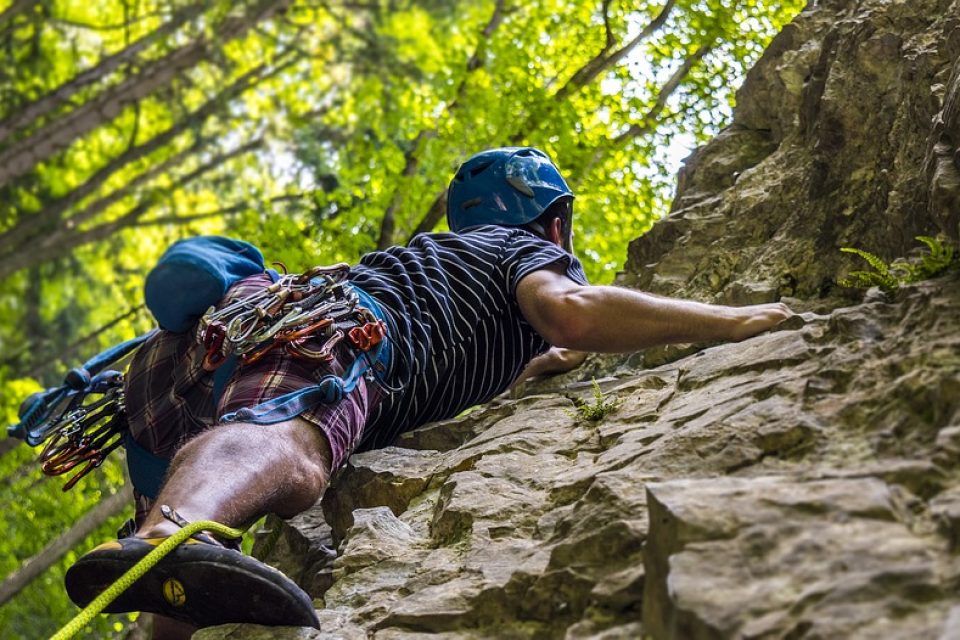Life Lessons From Rock Climbing
When rock climbing, you have to have a 100% faith in yourself. Luckily, Pam did just that. She was very self-motivated and trusted herself. Self-confidence is a valuable skill that will benefit you in many areas of your life. Keeping your balance is essential, and this skill will come in handy if you're looking to overcome obstacles in your life. Here are some lessons Pam has learned from rock climbing:
Never hesitate after making a plan
Climbing in the outdoors offers its own challenges, and climbing in a cliff is no exception. Fresh air and beautiful scenery combine to make for a magical experience. New climbers often worry about environmental factors and their own capabilities, but these are not necessarily disqualifying factors. Taking a day off after a fall can help recondition muscles, which in turn can lead to greater confidence and enjoyment later.
A prepared fall from high above the ground
The prepared fall method involves placing a belayer, or person who holds the climber in place, at the base of a climb. This prevents the leader from falling and pulling the belayer into the rock. A common belay station allows the belayer significant freedom of movement while minimizing the forces. A short lanyard, on the other hand, would increase the forces of the fall. Here are the advantages and disadvantages of the two types of anchors.
The belayer's job is to maintain enough rope for the climber while minimizing the impact risk. The belayer can micromanage the amount of slack in the system as the climber progresses. It is advisable to stay within two to three steps of the first bolt. If the climber lowers, the belayer should move back under the clip. A dynamic rope has a small amount of stretch and is easier to use.
A static rope doesn't stretch when the climber falls. This makes the fall feel like a car crash and may result in injury. However, with the proper technique and gear, falling from heights is largely risk-free. The use of static ropes is not recommended for climbing, but is often used in caving, abseiling, or rescue operations. Besides, static ropes don't give the climber enough stretch to avoid an accidental fall.
Practice is essential. If you're afraid of falling from high above the ground, practice taking short drops. Practice falling from the height of 30 feet before attempting a long one. Practice makes perfect and it builds confidence. You can also practice the proper technique and safety rules before you start a climbing project. A prepared fall from high above the ground can be a life-saving technique, but it's best to learn it from the experts.
Taking a whipper is a common technique in rock climbing and can intimidate the new climber. However, experienced climbers are trained to use this technique and have a belayer who holds the rope. As long as the climber has a buddy to belay him or her, the whipper technique can be a life-saving technique. It's also very useful for the novice climber - someone who is unsure of the technique can be very helpful if he or she is afraid of heights.
Keep your balance – it is the most important thing
As a beginner rock climber, one of the most important things to learn is to keep your balance. Balance is crucial in rock climbing, as your body's center of gravity needs to be balanced forward and backwards. You will also need to learn to lean backwards to see the route ahead. A good balance will be essential to executing many different moves, as your body is much stronger than your arms.
In order to improve your balance, you must practice rock climbing by practicing basic commands. Climbing requires you to learn how to communicate with your partner and how to be alert in any situation. You can also practice falling to overcome your fear. Practice makes perfect, and mastering the fear of falling makes the experience much more fun. So, what are you waiting for? Get started rock climbing today!
To keep your balance, you must first understand the concept of counter pressure. If you're climbing straight up, there will be too much space between you and the wall. You should use your big leg muscles to counterbalance your weight. This will also help you get good rests. Finally, you should know the backstep: standing on the foothold with the outside of your foot nearest the wall. This way, your hips will be in line with the wall and avoid a squared up climbing position.
Once you know how to counterbalance yourself, you can be a rock climber! Rock climbing is not only a sport for athletes, but it is also a great exercise for people who want to improve their mental health. The best way to keep your balance while rock climbing is to practice the basics and move slowly and steadily. Your body will thank you for it.
Another essential rock climbing technique is the scorpion kick. The scorpion kick occurs when a climber attempts to kill momentum and instead allows the momentum to whip through his body. The key to doing this is to not resist the momentum. If you do, you'll likely get carried off the wall. The more you resist momentum, the higher your chance of getting off the wall. The better your balance is, the easier it will be to catch a hold of a rock and stay on it.
Call to Action
When a climber asks their belayer for confirmation of a belay system, they're often confirming that they're ready to start the climb. They may also be requesting an extra rope or asking the belayer to pull in extra slack for them. The tone of the message is important. If someone gets too heated, it's best to stay cool and share alternative climbing areas. Climbers have been socialized for years, so their habitus is constantly changing and evolving.
This community values safety and respect for others. However, there are limits to what's acceptable and what isn't. While some actions may gain climber recognition and credibility, others are considered foolhardy. So, the climber must be aware of these boundaries. As long as he or she understands what they're doing and doesn't violate these limits, they'll be rewarded with more symbolic capital.


Comments
Post a Comment